Maxxis Aggressor Tire
| Where To Buy | |||
|---|---|---|---|
Free shipping on orders over $50 (continental U.S. only).
International shipping available. Some exclusions apply. |
Free shipping on orders over $50 (continental U.S. only).
International shipping available. Some exclusions apply. $63.00
|
||
Free shipping on orders over $50 (continental U.S. only).
International shipping available. Some exclusions apply. |
Free shipping on orders over $50 (continental U.S. only).
International shipping available. Some exclusions apply. $82.00
|
||
Review by Fred Robinson // Photos by Fred Robinson and Josh Job (action)
Maxxis has been setting the standard for high-performance mountain bike tires for years with gravity benchmarks like the Minion DHF, High Roller and more recently the DHR II and High Roller II. Having been the go-to tire for numerous World Cup DH riders, even when they were supported by competing brands, the sight of a "Sharpie'd" Maxxis wasn't uncommon before the rest of the tire brands caught up. Having laid down the yardstick in DH long ago, Maxxis set out to create another benchmark with their new tire, the Aggressor, which they claim to be the new standard in enduro tires. Maxxis debuted the Aggressor last March during the Taipei Cycle Show in their EXO configuration, then later at Eurobike in the more robust Double Down casing. We were eager to mount the new rubber to our six-inch steed and see if the tire stacks up to Maxxis' high pedigree.

Maxxis Aggressor Features
- All-around performance
- Dual-compound
- EXO 60 casing
- Available in DoubleDown (DD) 120 TPI dual-ply casing
- Tubeless Ready (TR)
- Sizing - 27.5 x 2.3-inch
- Weight: 885g (EXO) // 1,050g (DD)
- Intended conditions: Loose, loose over hard, medium
- MSRP: $62 (EXO) // $80 (DD)
Initial Impressions
Currently, Maxxis only offers the Aggressor in a 27.5 x 2.3-inch configuration, and while that may be limiting to some, we found the volume adequate and similar to the 27.5 x 2.3-inch Minion DHF and 27.5 x 2.4-inch High Roller II the Aggressors would be replacing. Available in both Maxxis' 60TPI EXO and 120TPI DoubleDown casings, we decided to mount one of each on our bike, with the heavier DD tire in the rear. We chose to take advantage of the tires being Tubeless Ready and mounted them as such with the addition of some tire sealant. As usual, before we reached for the air-compressor we had to give it the ol' college try and see if we could mount the Aggressors up using only a floor-pump. To our surprise, despite utilizing a folding-bead, the tires quickly popped into place and sealed immediately without the use of soapy water or any other tricks of the trade. For reference, we mounted these up to our SRAM RAIL 40 wheelset, so results may vary depending on your rim options. Tire pressure was set to our preferred 31 PSI out back and 27 PSI in the front. With all else ready to go, it's time to get these tires to dirt.

On The Trail
Maxxis indicates that the Aggressor is best suited for loose, loose over hard and medium conditions. Since we primarily tested these tires in SoCal, 95% of the time the exact conditions Maxxis described were met. It was evident right away Maxxis knew where these tires would excel. Cornering traction, despite the loose over hard conditions, was excellent. Regardless our lean-angle, the tires held a consistent and predictable amount of grip. We've ridden tires in the past that really require a committed approach when it comes to the ideal lean-angle, and while the Aggressors loved being pushed hard into corners, Maxxis employed some well-placed knobs with lateral Sipes to help you out in that transitional area between the center line and the side knobs. Even if you don't fully commit to a flat corner or are riding a nicely banked berm, there's still a good amount of traction when you're stuck in that transitional zone. When you do finally get the bike leaned over, the Aggressor features some slightly modified but familiar-shaped side knobs that take over when you get low. Think a less aggressive DHF//DHR II side knob. Like the Minion's, the Aggressor features an alternating block and L-shaped pattern to the side knobs. But, instead of having a large Sipe all the way through the block-shaped knob and no Sipe on the L-shaped one, the Aggressor features a smaller, lateral Sipe on every knob. While worth noting the slight differences between the Minion and Aggressor side knobs, we didn't feel any loss or gain in cornering performance with the new layout and found the Aggressor to tackle hard cornering just as well.
So, how come the new Aggressor handles not-so-aggressive cornering so well? Maxxis took cues from the revamped DHR II center knob to side knob spacing and employed a similar layout for the Aggressor. Notice how each center knob falls between that empty space between the side knobs? As Kidwoo so keenly pointed out in his review of the DHR II, this open area keeps the the tire from having a rounded profile, allowing more dirt to get between the knobs which, in turn, translates to more traction. Good stuff.

Now that we've covered how well the Aggressor corners, let's dive into to its braking performance. Maxxis uses three different knobs to handle upright braking: (1) a blockly "V" shaped knob, (2) a knob that looks like a hybrid of the Batman logo and a Transformer (or something) with the center knob having a horizontal Sipe and the two "wings" having those vertical Sipes that help with banked-turn traction and (3) a generic-looking rectangular, blocky knob with two horizontal Sipes and vertical channel between them. What do all these knobs have in common? Big, flat horizontal edges that will help dig into the earth when you get hard on the brakes. Due to the Aggressor's well-thought-out center knob design, we found the tires to offer excellent braking traction, even in the dry and hard-pack conditions we tested the tires.
While we primarily tested the Aggressor tires in the dry, we were lucky enough to start getting some rain here in SoCal (thank you El Niño!) and put in a few days in the wet. While we never rode the tires in slop, the tires performed exactly how we’d expect in the damp, perfect earth that was our trails for a few lovely days - with increased cornering and braking traction and slightly more rolling resistance. In the few muddy spots we did roll through, we didn’t see any mud pack-up at all, but it’d be premature to comment much more about their shedding abilities as it was only a few patchy areas with poor drainage.

So how does the Aggressor roll? That was kind of a tough one for us to figure out, They didn't really feel incredibly sluggish nor did they roll extremely fast like a Cross Mark. We really wish there was more we could say about this, but the Aggressor really didn't stand-out either way, a testament to Maxxis' claim that the Aggressor offers excellent all-around performance.
Casing. We mentioned we chose to run the lighter EXO casing up front with the more durable DD casing out back. During our two months of testing we experienced no sidewall tears or punctures. Support, even under heavy cornering and sideways compressions, was ample and we didn't experience excessive tire-roll or burp them. Overall, even with poor line choice in rocky conditions, we found the casing adequate.

Long Term Durability
As stated previously, we found the casing of the Aggressor ample for aggressive SoCal riding in our EXO front and DD rear configuration. If you're riding somewhere extremely rocky (we're looking at you, Phoenix), we'd opt to run the DD casing exclusively. As far as tread wear, the Aggressors are holding up surprisingly well both front and rear. Neither tires show's significant knob deformation after upwards of 150 miles of trail riding. These tires look to be in it for the long-haul.
Things That Could Be Improved
With no glaring flaws nor any issues during our test, we're hard pressed to find a reason to fill out this section of our article. We were hoping the Aggressor's we received were going to feature these sweet tribal flaming sidewalls found on the proto tires we spotted at last year's Eurobike, just so we'd have something to moan about. But, unfortunately our Aggressor sidewalls didn't look like an overly-tan bodybuilder's tattooed arm from 1995. Oh well.

What's The Bottom Line?
Maxxis claims excellent all-around performance with the Aggressor and they delivered. We found the new Aggressor to excel in all three of its designated conditions in both cornering and braking situations. While it might not be the fastest rolling tire in the world, it's also not the slowest, and we don't think you'll miss the additional speed in the straights when it's so easily made up with great cornering traction on both flat and banked turns. Has Maxxis created a new standard in enduro? It's too soon to know, but they've done an incredible job at creating a benchmark of what a great all-around mountain bike tire should be.
For more details, visit maxxis.com.
About The Reviewer
Fred Robinson, a.k.a. "Maximus Derfimus," has been on two wheels since he was two years old. He picked up a mountain bike in 2004 and started racing downhill in 2006. He has seen moderate success racing but focuses his efforts on building, maintaining and riding his local trails. He's deceptively quick for a bigger guy and likes steep, fast trails where he can hang it off the back of the bike. As a SoCal native he mostly rides trails covered with loose, traction-less turns and sharp, immovable rocks. Besides downhill, he rides trail bikes, road, and also enjoys the occasional dirt jump session.
1 member reviews
Good wear
Easy to install tubeless
Tuff sidewalls
Light weight
They're not free
I've been running the 27.5 x 2.3 Aggressor TR with EXO casing as my rear tire for about 4 months now. The tire is fitted to a 29mm inner width NOX carbon rim. For my lighter weight (145lbs), I've been running tire pressures from 24.5 to 28.5 psi. The sweet spot for me is around 25.5 to 27.5 depending on the trail conditions. Maxxis bills the Aggressor as an enduro oriented tire. I've been using it for everything from light trail rides to days in the bike park.
Like most Maxxis tires, tubeless installation is pretty easy. I was able to get the tire to easily seat and hold air with just a floor pump. I'm using Orange Seal "Endurance" sealant and have yet to have a noticeable puncture or loss of air pressure.
The Aggressor seems to sit somewhere between the DHR II, High Roller II and Minion SS performance wise. It's a fairly light tire yet durable tire. Climbing traction is better compared to a High Roller and Minion SS. Cornering traction is on par or slightly better than a DHR II. The Aggressor has a very planted feel when transitioning from upright to leaned over and back. Braking traction might be the tires only weak point. Tire wear has been very minimal until the tire encountered some heavy bike park use. Rolling speed is almost on par with the Minion SS.
The Aggressor impressed me enough to see a repeat performance. It neatly fits the bill as one of the best choices for a SoCal oriented rear tire.
0 comments
Post a reply to: Aggro Aggressor!
Specifications
Buy it at Worldwide Cyclery
| Where To Buy | |||
|---|---|---|---|
Free shipping on orders over $50 (continental U.S. only).
International shipping available. Some exclusions apply. |
Free shipping on orders over $50 (continental U.S. only).
International shipping available. Some exclusions apply. $63.00
|
||
Free shipping on orders over $50 (continental U.S. only).
International shipping available. Some exclusions apply. |
Free shipping on orders over $50 (continental U.S. only).
International shipping available. Some exclusions apply. $82.00
|
||







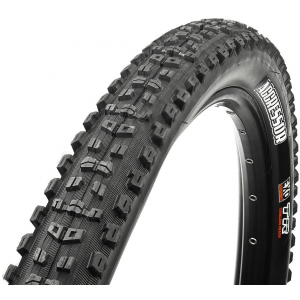
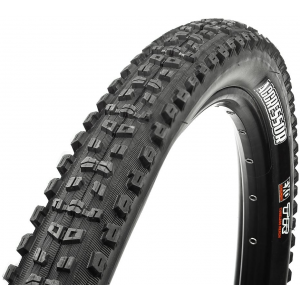
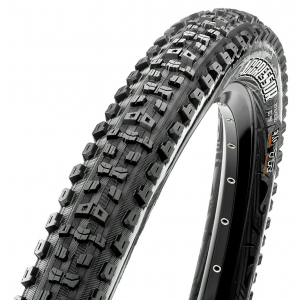








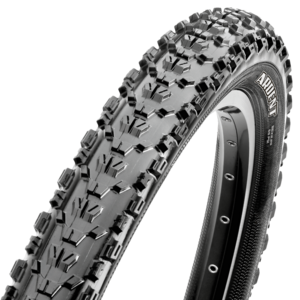


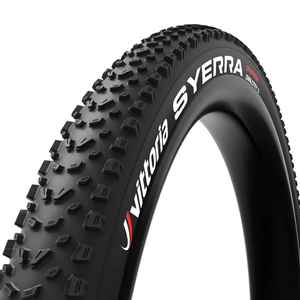










43 comments
Post a reply to: Tested: Maxxis Aggressor